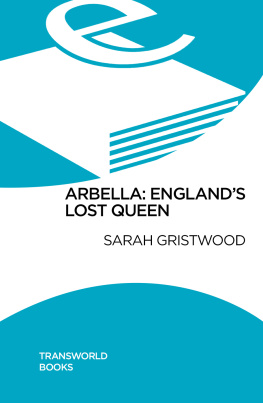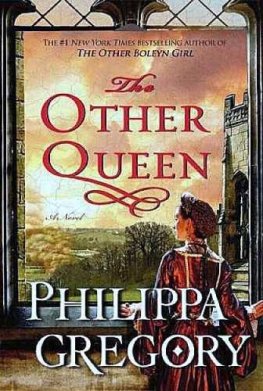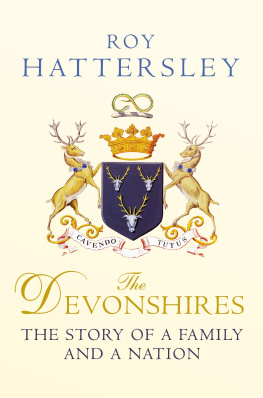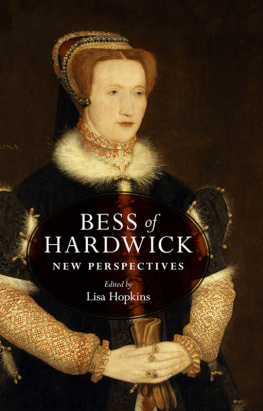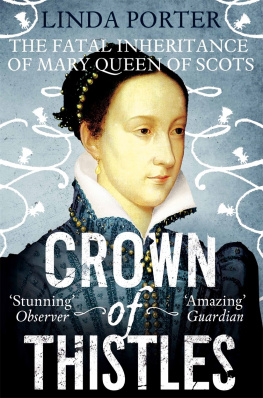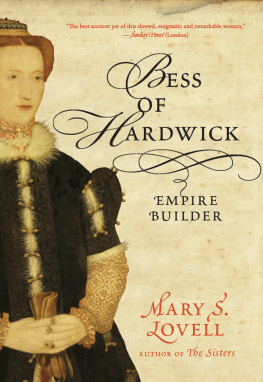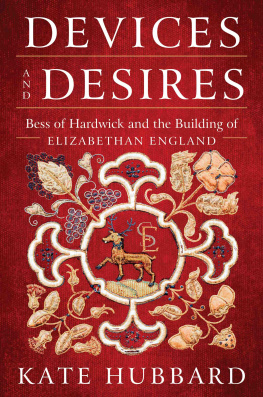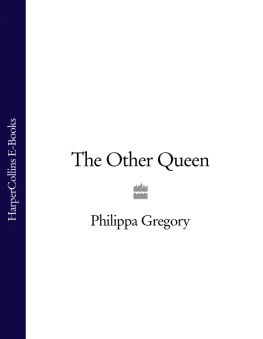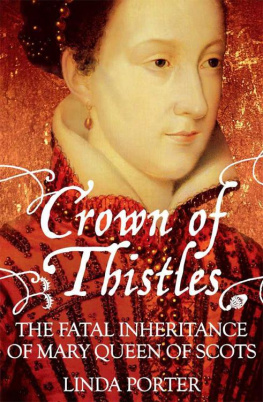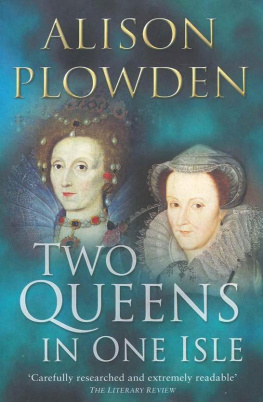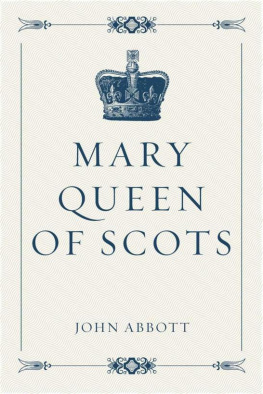About the Book
I must shape my own coat according to my cloth, but it shall not be after the fashion of this world, but fit for me
Niece to Mary, Queen of Scots, granddaughter to the great Tudor dynast Bess of Hardwick, Lady Arbella Stuart was born and bred in the belief that she would one day inherit her cousin Elizabeth Is throne. Many at home and abroad anticipated she would be crowned Queen. However Arbellas fate was to make a forbidden marriage, to die a lonely, squalid death in the Tower and to be written out of history.
Drawing on a wide range of contemporary sources, including Arbellas own extraordinary, passionate letters, Sarah Gristwoods acclaimed biography paints a vivid and powerful portrait of a woman forced to tread a precarious path through one of the most turbulent, treacherous periods in British history, and in so doing rescues this lost queen from obscurity.
Contents
SARAH GRISTWOOD
ENGLANDS LOST QUEEN
Preface
It would, of course, be a crime to rifle through a volume of centuries-old letters as though it were an airport paperback. You would certainly never get the chance (so vigilant are the staff of the British Librarys Manuscripts Room) with the hefty tome labelled BL Harl. MS 7003. But in just one way, it would be an interesting experiment. Those letters that were written by Arbella Stuart would leap out at you instantly.
Amid the cramped, indecipherable hands of many of her contemporaries, often as inaccessible to the novice as if they had been Linear B, Arbellas writing stands out for its sheer size. Capitals are as tall as the top joint of a finger; and never larger, surely, than when she is writing something like the huge S of my Selfe that proclaims her identity. Not only her neat, schooled presentation script but her more frequently seen informal hand are clear as a bell to read (even to someone who habitually bins postcards on the grounds of illegibility).
No doubt it would be a mistake to deduce too much from her letters appearance, especially at a time when the vagaries of a quill might change writing considerably. But it is hard to avoid when, at the end of an appeal to the king, her very signature is split in two, so that your Majestys follows right after the text, succeeded by half a sheet of blank space before most humble and faithful subject and servant comes with her name at the bottom of the page. These were the letters Arbella wrote from prison, and the management of space was surely a device to prevent anyone else adding a treasonable postscript, and getting her into worse trouble than she was in already.
One archivist mentioned to me that Arbella obviously cared how her letters were laid out on the page. Another, peering over my shoulder in the library at Longleat, asked: Did she actually send that? horrified, clearly. But curiously enough, both reactions make sense. Often Arbella Stuarts letters begin in an elegant presentation hand, then degenerate into an angry scrawl as her feelings carry her away. Afterthoughts are squashed sideways in the margin, where a calmer spirit might have broached another sheet. Letters are addressed, on the outside, with the self-conscious formality due a great lady; but marred, on the inside, with the heavy scratchings-out of one who desperately fears being misunderstood and marred, all too frequently, with the blots of tears.
For me, the attraction of Arbella Stuarts dramatic life almost pales beside that of her passionate and complex character. Here, of course, her letters are key. She wrote of herself with a freedom possible to no other royal woman, and rarely seen again in any woman until comparatively recently. It is her letters that now when the Stuart dynasty is gone as surely as the Tudor still give her a claim to posthumous fame in her own, private identity.
But there are other reasons to tell Arbella Stuarts life; reasons beyond even the perennial pleasures of telling a good story. The title of this book, of course, is something of a punt, a provocation. But, like every such statement, it contains a kernel of truth. In her own day, many prominent commentators took Arbella Stuarts chances of inheriting Elizabeths throne very seriously. History has an unamiable habit of losing the losers, and so that has been forgotten today. But I see no way of understanding Arbellas fate, or her personality, unless we give her political importance the weight it had for her contemporaries the weight it had, most significantly, for Arbella herself.
David Cannadine, in History in our Time, wrote of King George VI: At no stage in his career did he ever seriously make history. Instead, it was history that happened to him. And that is just about the hardest kind of history to write or to live. Perhaps , in the end, history and Arbella Stuart approached on the street and passed each other by, unrecognizing. But it would be a treat to have such an intimate portrait of any woman born four centuries ago, even were there no political dimension to her story. Yet today, despite a good deal of interest in academic circles, to the general public Arbella Stuart has lapsed back into the realms of the almost-forgotten name; one of those ghosts who haunt the fringe of memory.
My own interest in Arbella was first sparked by study of her grandmother Bess of Hardwick, and of Besss relations with the two queens, Elizabeth I of England and Mary of Scotland. I saw in my mind a curious pattern, like an irregular diamond, its four corners bearing each a miniature of the four women whose destinies were intertwined, two of the Tudor type and two of the Stuart: Bess and Elizabeth, Arbella and Mary. Bess left the great house of Hardwick as her stone memorial. Elizabeth Tudor and Mary Stuart are the stuff of legend, offering an emotive alternative the charismatic, or the romantic? to every amateur of history. (My own allegiance was always to the Tudor model. I never heard the Stuart siren song; and to find myself having written the biography of a Stuart still fills me with a kind of incredulity.) But Arbella provoked in me a nagging sense of a story missed, a road not taken; a bewilderment that she in whose veins ran the blood of all the others could have disappeared so completely.
In attempting to bring Arbella Stuarts life to a wider audience I have of necessity made certain practical decisions, like modernizing spelling and punctuation to a degree. Selective source notes are given at the end of the book, but precise calendar dates are at a premium; partly because of the endless explanations necessitated by the two different calendars in use at this time, but partly because so many of the relevant papers are in any case undated. I describe the protagonists by whichever forename, surname or indeed nickname distinguishes them most clearly. These were difficult times for a biographer, with the same names recurring endlessly through a family tree, so that William Cavendish could describe Arbellas grandfather; her uncle; or two of the cousins with whom she had most to do. (It seems a particularly malign disposition on the part of Providence that three of the noblemen unrelated to Arbella who were most instrumental in her career should be the earl of Northampton, the earl of Northumberland and the earl of Nottingham, two of whom share the surname Howard and two the forename Henry.) Courtiers of the Jacobean years changed titles with promiscuous frequency but Robert Cecil (who in the space of a mere fifteen became successively Sir Robert Cecil, Baron Cecil, Viscount Cranborne and the earl of Salisbury) remains Robert Cecil throughout the story; just as Gilbert and Mary Talbot remain Gilbert and Mary Talbot even after they followed their parents as earl and countess of Shrewsbury. Again in the interests of simplicity and readability, I have also kept capitalization of titles to the absolute minimum. Thus I refer to King James but the king and the king of Scotland; to the earl of Essex; and to the privy council. In a narrative so closely concerned with the affairs of the titled and the institutions of state, to do otherwise can produce a bewildering array of capitals that after a short time becomes exhausting to the eye.
Next page
